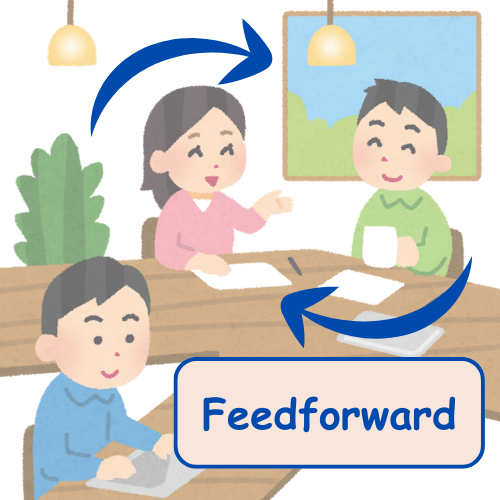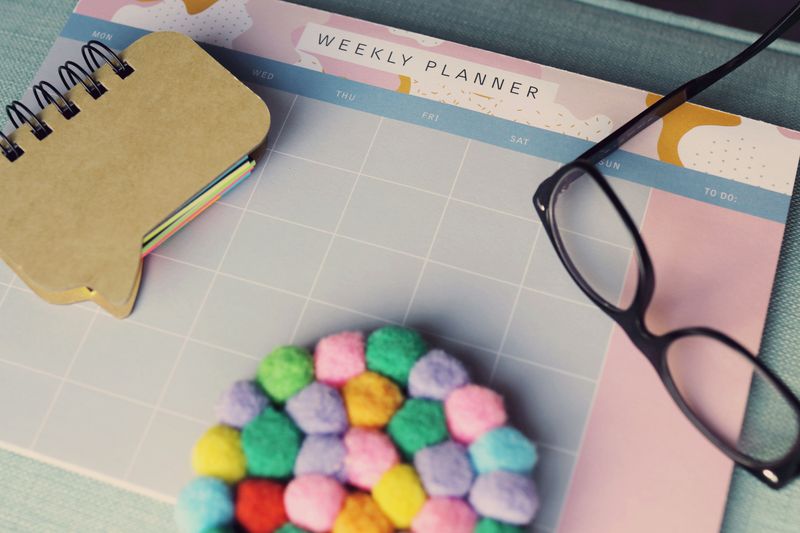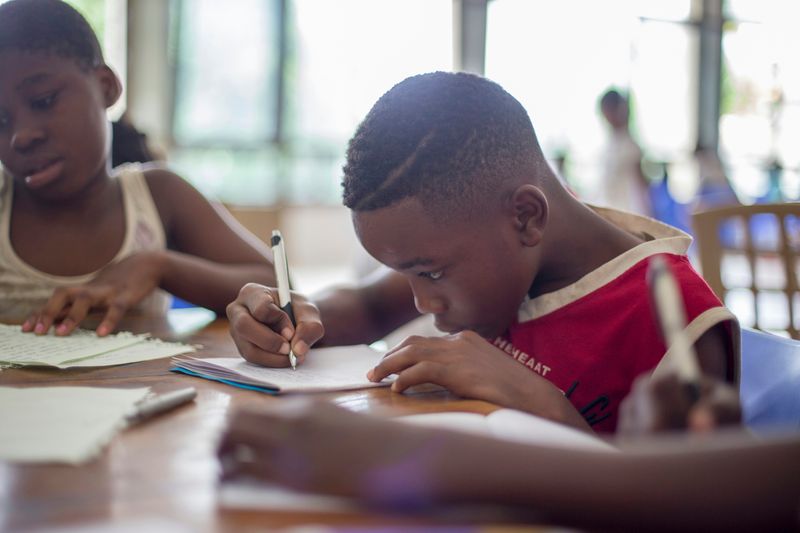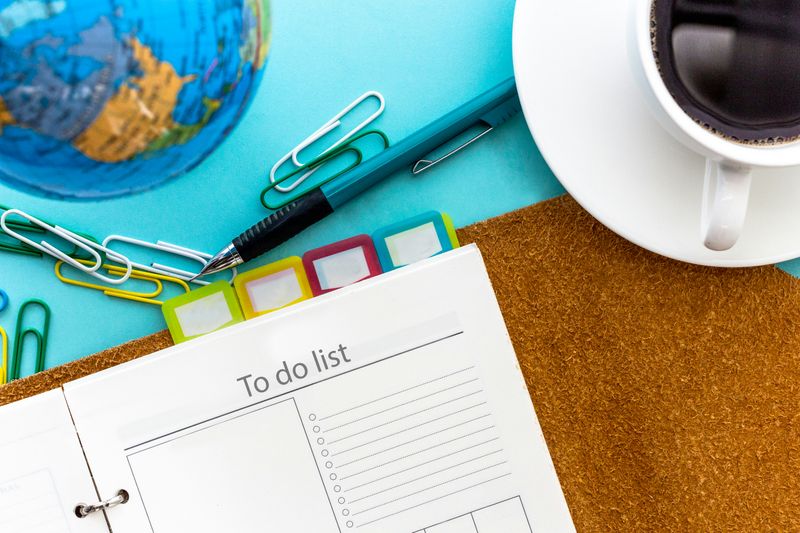
This logo isn't an ad or affiliate link. It's an organization that shares in our mission, and empowered the authors to share their insights in Byte form.
Rumie vets Bytes for compliance with our
Standards.
The organization is responsible for the completeness and reliability of the content.
Learn more
about how Rumie works with partners.
Are you a teacher with struggling students? Do you wish the class grades were better? Are your students disinterested?
 Photo by JESHOOTS.COM on Unsplash
Photo by JESHOOTS.COM on UnsplashThere is hope! Once you make a simple adjustment to your current teaching technique, you may never look back.
So, what is this teaching technique? Feedforward!
What is Feedforward?
Feedforward is a teaching method that uses conversation to guide learners.
It shifts from feedback, which focuses on the past, to feedforward, which offers suggestions for the future.

Benefits of Using Feedforward
According to Marshall Goldsmith,feedforwardis a more efficient and effective way to help learners than feedback.
It builds confidence and fosters positive change in students.
Using feedforward in the classroom helps improve student growth and the outcome of their future assignments.
Feedforward helps students understand their strengths and weaknesses positively and constructively, emphasizing self-improvement.
 There are three basic concepts to remember when using the feedforward approach in the classroom.
There are three basic concepts to remember when using the feedforward approach in the classroom.
#1: Highlight Success
 Photo by Brett Jordan on Unsplash
Photo by Brett Jordan on UnsplashAlways acknowledge at least one positive aspect of an assignment during a feedforward conversation.
When Using Feedforward:
Have your students tell you one or two things they did well.
Explain to them why their work is impressive. Don't just say, "I like that."
If relevant, highlight their organization.
If relevant, acknowledge their intention. (the project was well thought out)
 Traditional Feedback
Traditional Feedback
"Not bad. Keep going."
"I liked your paper. Nice job."
"Your presentation was interesting."

Try the Feedforward Approach Instead
"I like how you came up with two topics to include on your poster. That shows me you're willing to go beyond the basic directions for the assignment. Tell me what you like most about your history poster idea."
"Your project outline is well organized, making it easy to imagine. Which part of the outline are you most proud of and why?"
"You did a great job of researching the topic you wrote about. I can see you're a go-getter. That's inspiring! What is your favorite section of the paper and why?"
Did you know?
You can watch a one-minute video on YouTube that simplifies the explanation of feedforward.
#2: Coach, Don't Judge
 Photo by Randy Tarampi on Unsplash
Photo by Randy Tarampi on UnsplashLearners are more attentive listeners during feedforward conversations.
Shift Your Focus from Feedback to Feedforward:
Ask your students what areas they think they can work on.
Consider mistakes or omissions as opportunities for growth.
Positively support this learning opportunity.
Encourage self-improvement with ideas for future assignments. (Next time,...)
Keep the conversation about the future (feedforward) and not the past (feedback).

Traditional Feedback
"There isn't enough information on your science project outline. I can't envision the final project."
"It's apparent that you did not use the rubric as your guide for the assignment. Your score reflects this.
"I subtracted some points because the presentation lacked energy and visual excitement."

Try the Feedforward Approach Instead
"Your butterfly project has a lot of potential. What could you add to it to make it appealing to the eyes?"
"Naming the most common butterflies in our area makes your project relevant. What are some fun facts about butterflies that you can include?"
"When editing your outline, consider additional information people might find interesting about butterflies. Be sure to include those details."
Did you know?
Scores and grades are considered "feedback". "Feedforward" is the guidance given during the learning process or assignment that promotes self-improvement for the initial and future assignments.
#3: Provide Ideas for "Next Time"
 Photo by Iga Palacz on Unsplash
Photo by Iga Palacz on UnsplashSuggestions focused on the future rather than the mistakes of the past are well accepted by learners and, therefore, more productive.
Offer Suggestions for Improvement:
Plan regular conversations with your students during projects
Use discussion time to guide students' personal improvement goals
Take their improved skills to the next level. Make suggestions for additional improvement.
 Traditional Feedback
Traditional Feedback
"Your essay is too short."
"There are a lot of spelling errors."
"This is great; I just wish you did more."

Try the Feedforward Approach Instead
"When revising your essay, include at least three body parts."
"Before you turn in future drafts, use the spellchecker to see if you made any errors."
"Great start. Let's think about how you could take this from great to extraordinary. What else could you add to this that would amaze your classmates?"
Test Your Feedforward Skills
 Photo by Brett Jordan on Unsplash
Photo by Brett Jordan on UnsplashLiam presented his history project to the class yesterday. Today, you have your scheduled after-project review and plan on using the feedforward approach.
Although he had enough facts to earn a passing score, you feel he could have done better and want to provide helpful tips for future assignments.
Which of the following comments are representative of feedforward? Select all that apply:
A. "Next time you present to the class, work on speaking loudly so your classmates in the back of the room can hear you better."
B. "I like how you followed the rubric for the assignment. That tells me you care about doing well in history."
C. "It's common for speakers to have note cards. Consider having some with you during your science project next week."
D. "You presented great historical facts yesterday. When you give your next presentation, including some visuals would be a great idea."
Quiz
Select all that apply:
A, C, and D are all focused on future assignments, so they fall in the "feedforward" category. Although B could encourage Liam to follow the rubric in the future to support his good grades, it doesn't offer additional suggestions for upcoming assignments.
Teaching Students To Use Feedforward

After students have had a chance to review their work and write out a goal, they should meet with a peer and ask for two or three additional suggestions.
"Besides my additional subtopic, what else should I include?"
During their peer suggestion meeting, have them write down the ideas provided.
"Include one fun fact."
"Find a picture that supports the topic."
"Compare my topic with a similar one."
After they receive suggestions, they should say, "Thank you."
There shouldn't be any further conversation. A simple "thank you" is all that is needed.
Swap roles and repeat.
Once both students have gone through the feedforward process, have them make improvements based on their new goal and peer suggestions.
Did you know?
Help your students learn how to be successful with feedforward conversations using another technique called I Like, I Wish, I Wonder.
Take Action
This Byte has been authored by
Katrina B
Instructional Designer
AAS, BS, MS
